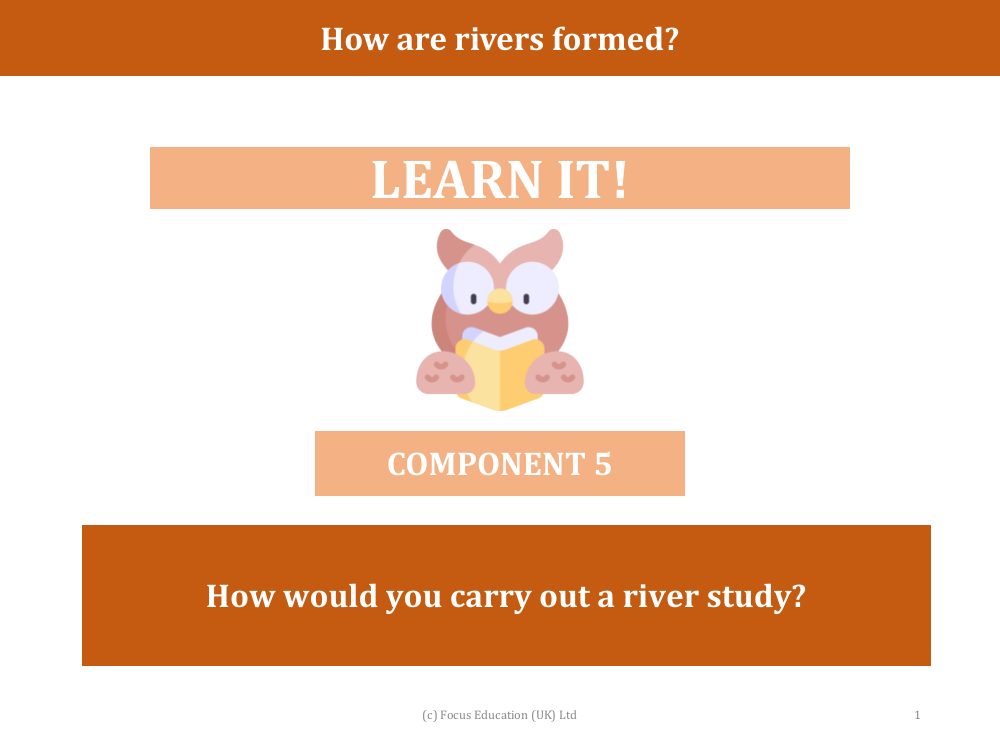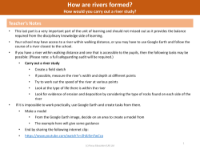How would you carry out a river study? - Presentation

Geography Resource Description
Conducting a river study is an integral part of learning about the natural environment and understanding the formation and characteristics of rivers. If a river is accessible within walking distance from the school, students can directly engage in practical tasks, but if not, virtual tools like Google Earth can be used. A comprehensive safeguarding audit is essential before any fieldwork. During the study, students may create a field sketch, measure the river's width and depth at various points, determine the river's speed, examine aquatic life, and observe evidence of erosion and deposition by studying the rocks along the riverbanks. These hands-on activities provide a balanced approach to disciplinary knowledge and allow students to explore the dynamic nature of rivers firsthand.
When a river cannot be studied on-site, technology offers alternative methods. Using Google Earth, students can follow a river's course and select an area to create a model, which helps visualise and understand river processes. Additionally, photographs taken during fieldwork can be used to produce detailed field sketches back in the classroom, further enhancing the learning experience. Whether in the field or the classroom, studying rivers can be adapted to suit the available resources, ensuring that students gain valuable insights into river formation and behaviour. The study can be concluded by sharing educational resources, such as internet clips, that complement the practical investigation.


